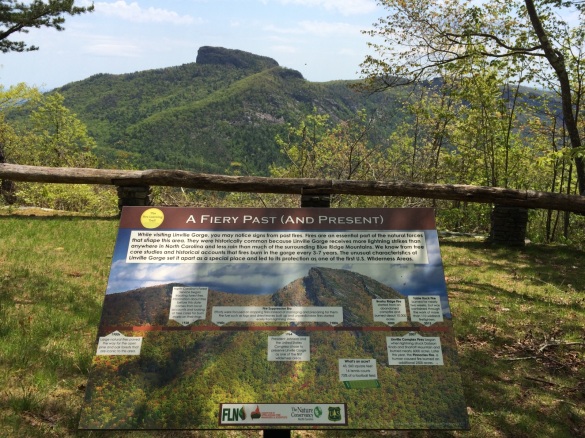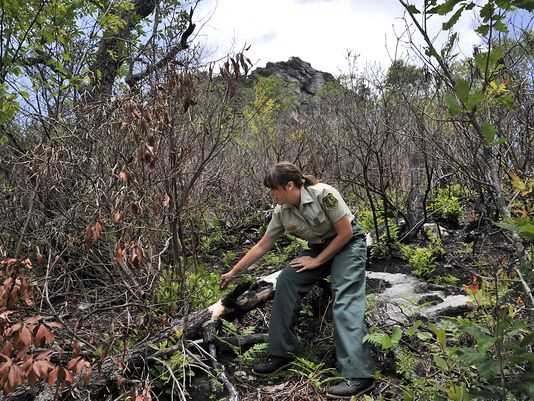Visiting Linville Gorge on the Grandfather Ranger District of the Pisgah National Forest it is hard not to notice the signs of fire. From the iconic wind-whipped table mountain pines gripping the cliffs at the edge of the gorge, to the characteristic clear views, fire has shaped Linville from the beginning.

Partnering with The Nature Conservancy, The Fire Learning Network, and the Consortium of Appalachian Fire Managers and Scientists, the Grandfather Ranger District has installed a series of informational signs along Old NC 105 on the west rim of Linville Gorge to share with the public information about fire safety, fire history, fire ecology, and firefighting. Visitors starting at the Information Cabin at the north end of Old NC 105 can visit the signs by driving south along the Fire Learning Trail as they take in the sights of the area.
The signs are accompanied by a series of pod casts featuring radio-style interviews with local fire managers that are available on iTunes (search: Fire Learning Trail) or on CDs distributed free of charge at the Linville Information Cabin.
The Fire Learning Trail is part of an effort to increase education on the history of the Grandfather Ranger District and the forces of nature that have shaped the forests. Specialists from The Nature Conservancy and the Consortium of Appalachian Fire Managers and Scientists were on hand at the Linville Gorge Spring Celebration last weekend to talk to the public about this exciting new outreach effort.




